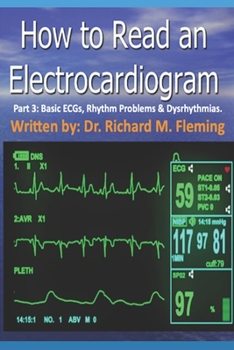How to Read an Electrocardiogram - Part 3: Basic ECGs, Rhythm Problems & Dysrhythmias.
In Part 3 of How to Read an Electrocardiogram, we will look at a series of three lectures given by myself to my medical students, residents and fellows; on the Basics of ECG rhythms and axis orientation, Basic Rhythm interpretation and problems, and finally Dysrhythmias. If you learn nothing else, please learn we are not talking about arrhythmias. "A" means the absence of something so the only "arrhythmia" is "asystole" or the absence of a rhythm. Everything else is a "dys" or "abnormal" rhythm; aka "dysrhythmia."The importance of learning how to read rhythm disturbances if far more than just being able to answer questions correctly on a test, or even being able to demonstrate to others that you can read electrocardiograms.Electrocardiograms are obtained to look for specific problems with the heart, and with that knowledge to know what treatments to prescribe to address each patient's specific cardiac problem. This includes which drugs or treatments to provide to control the patient's heart rate and when combined with proper control and treatment of their blood pressure, improvement in their stroke volume, and their overall cardiac output.
Format:Paperback
Language:English
ISBN:B08NWY71K8
ISBN13:9798569580408
Release Date:November 2020
Publisher:Independently Published
Length:50 Pages
Weight:0.23 lbs.
Dimensions:0.1" x 6.0" x 9.0"
Customer Reviews
0 rating





